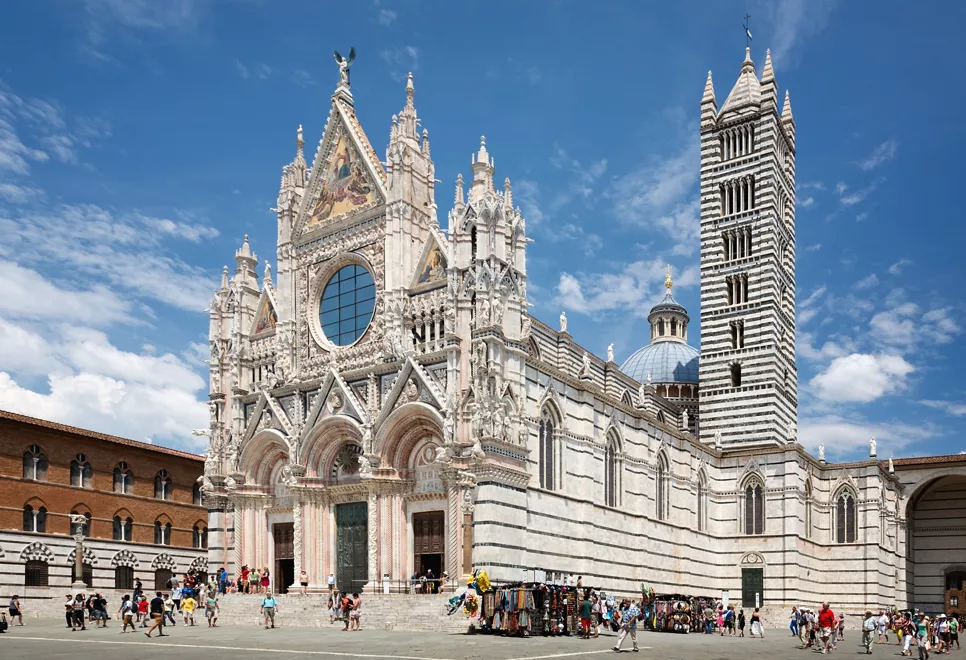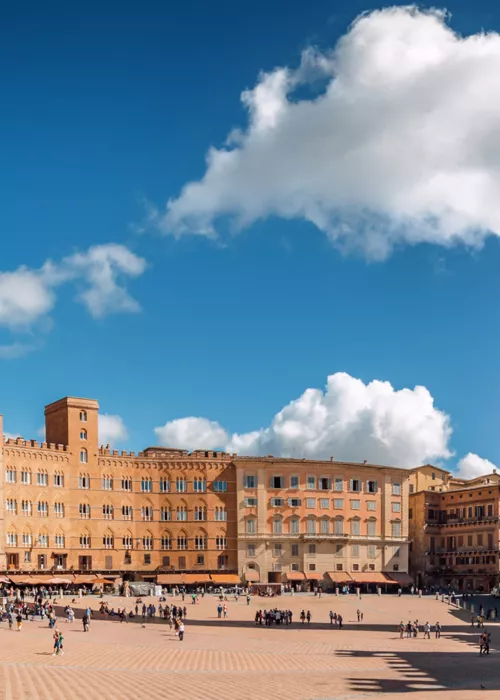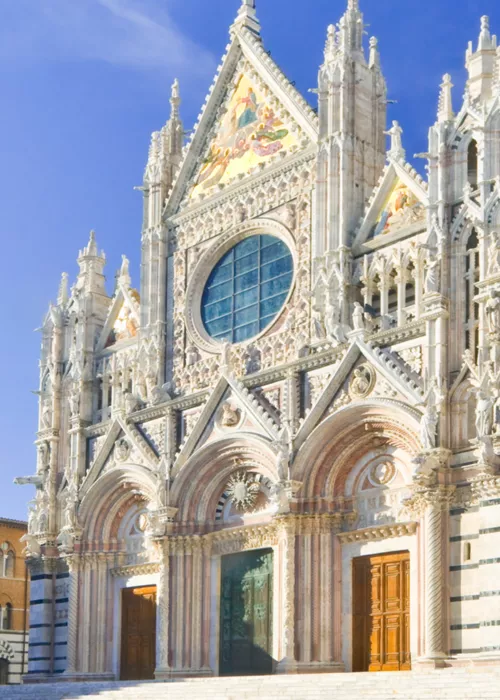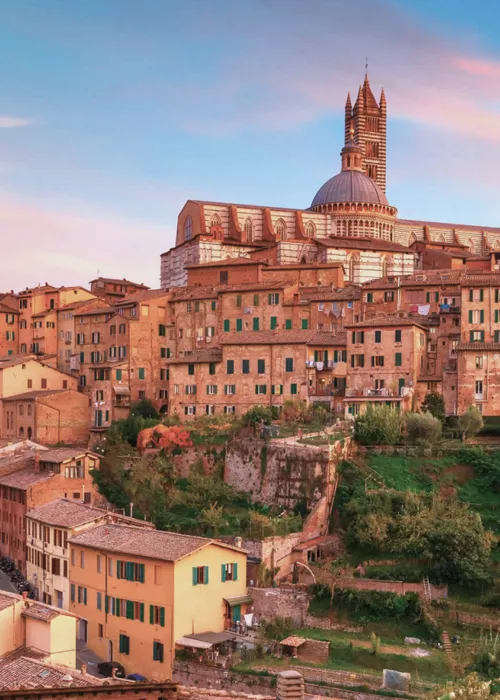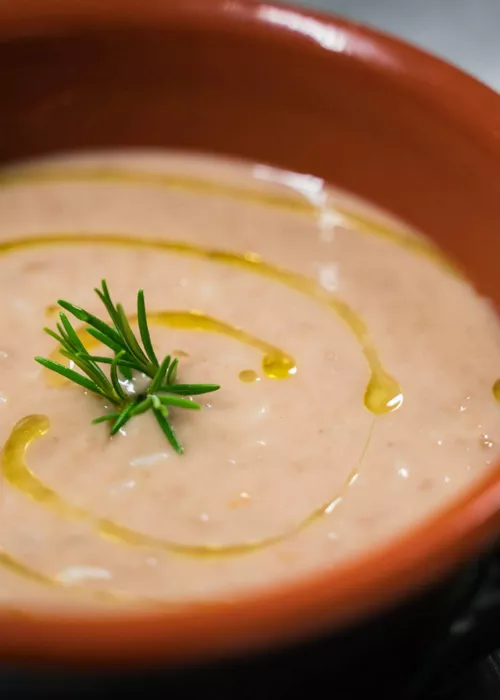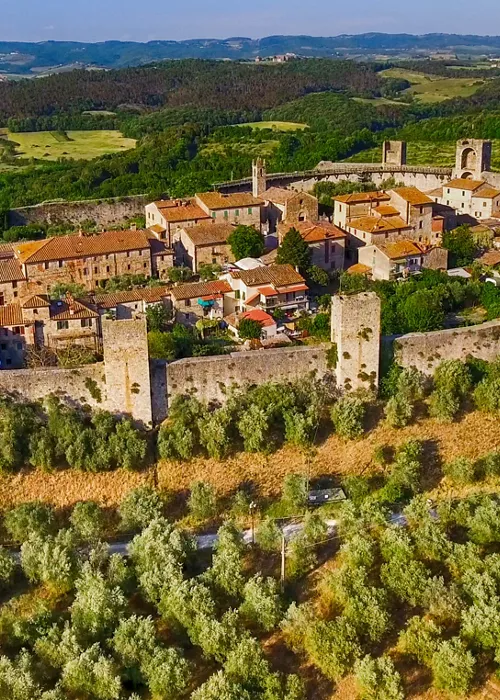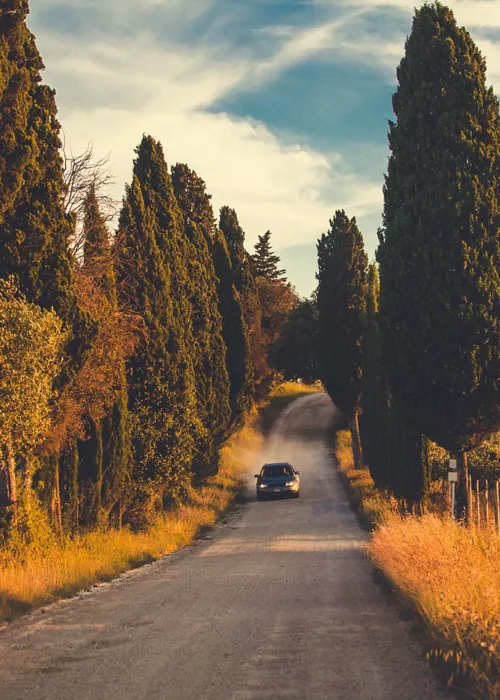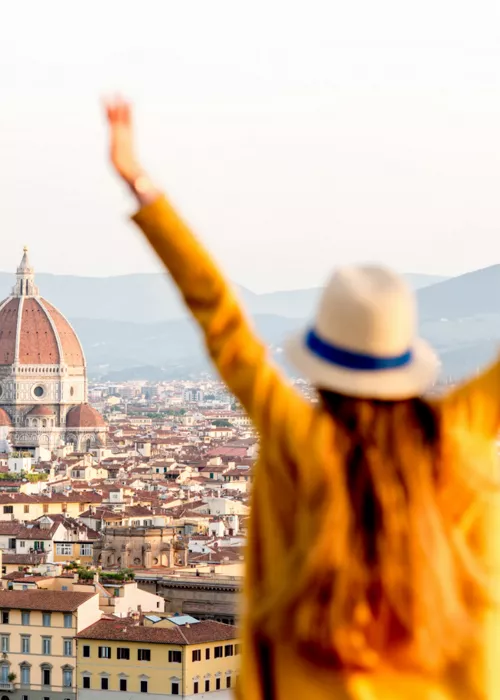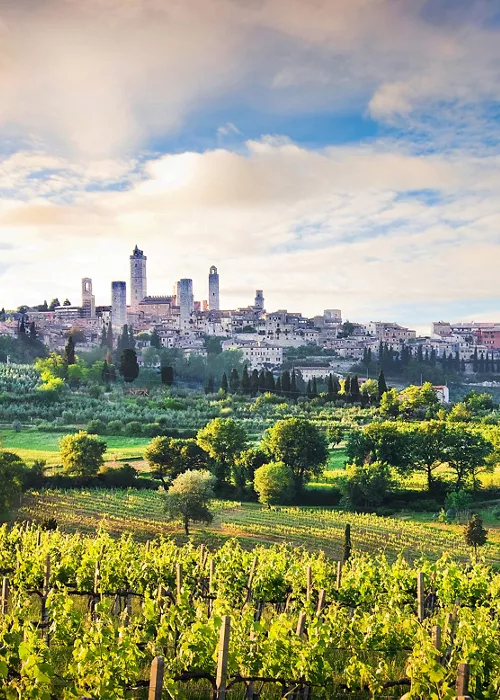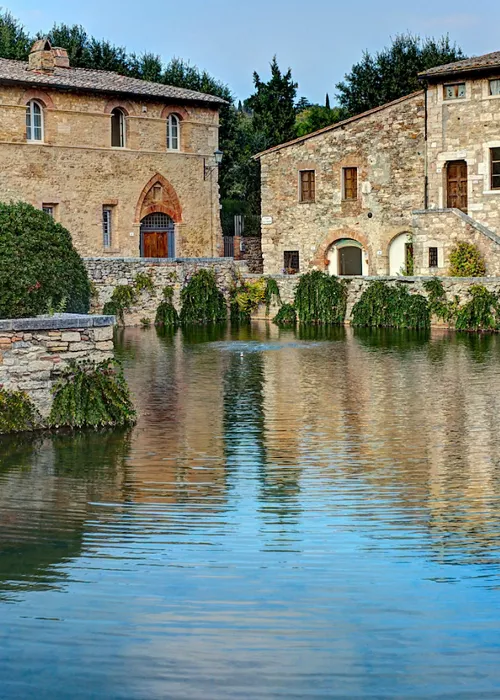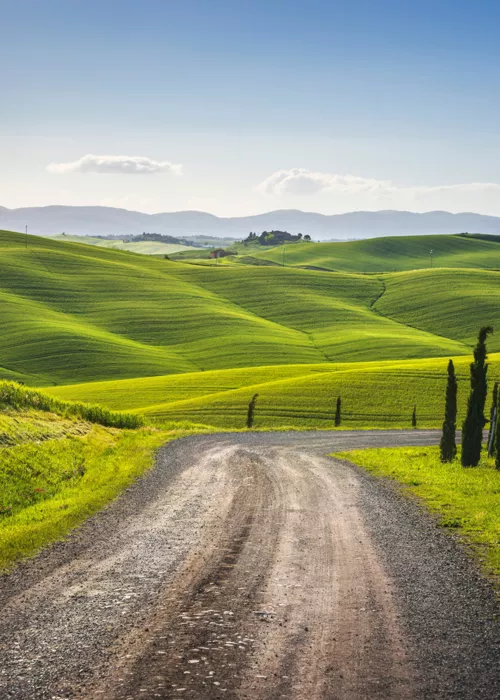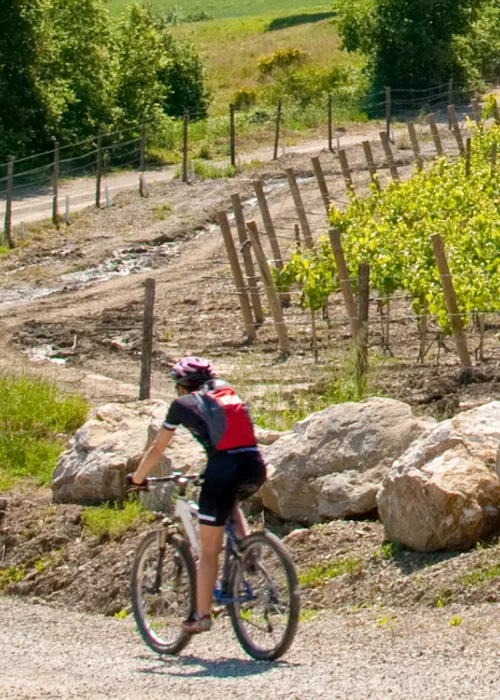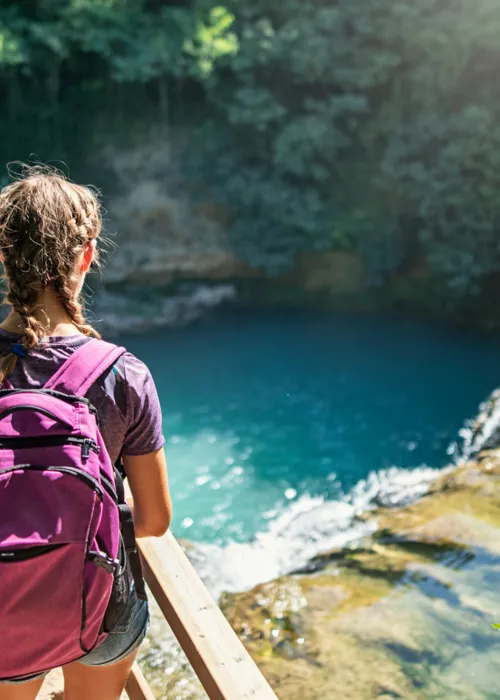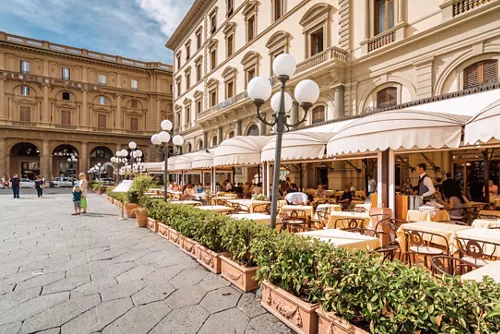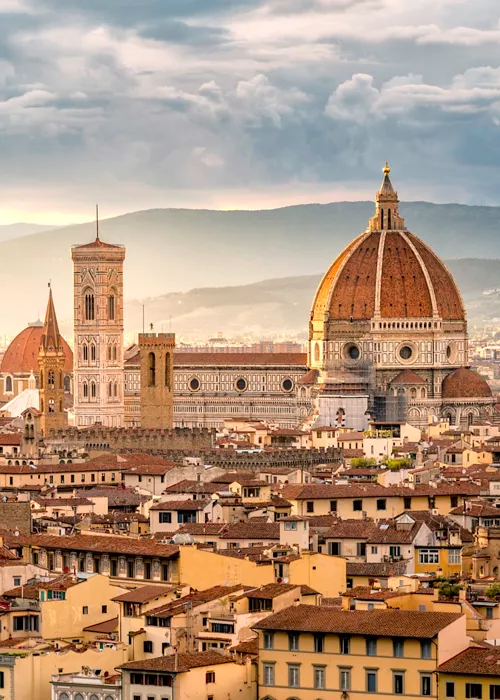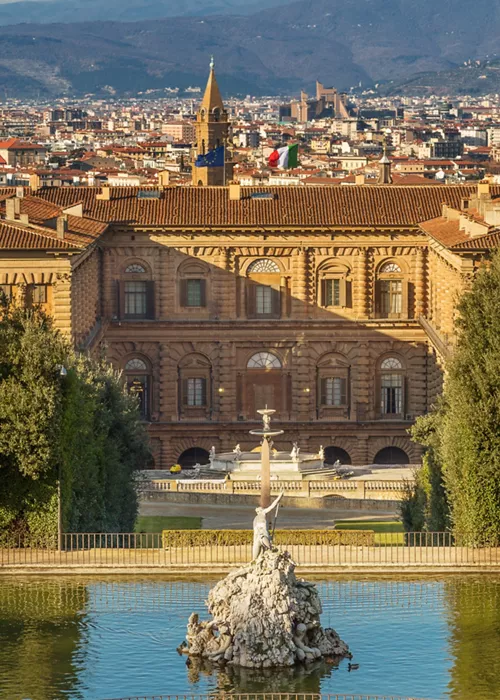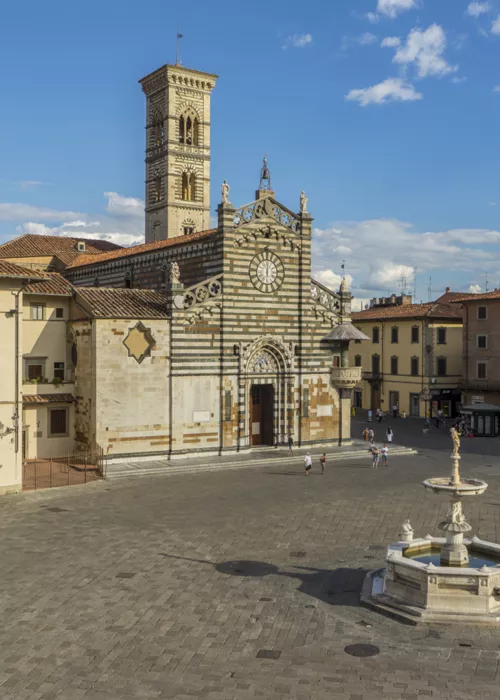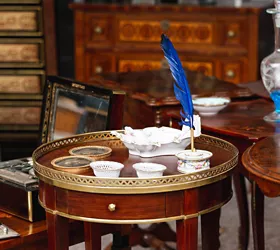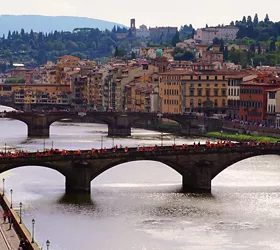Siena and Surroundings: An Itinerary Through the City’s Artistic Marvels
5 minutes

Few cities in the world can preserve such a rich and layered artistic heritage as Siena. In the heart of Tuscany, the city of the Palio is a medieval gem that continues to enchant travelers and scholars alike. Its stone-paved streets, noble palaces, and painting cycles that have shaped the history of Italian art—together with the harmonious landscape of the Crete Senesi and the surrounding villages—make this area an unmissable destination and a UNESCO World Heritage Site.
Piazza del Campo, the Symbolic Heart

The heart of Siena and one of the most famous squares in the world, Piazza del Campo is instantly recognizable for its shell-like shape and for hosting the Palio, the horse race that twice a year transforms the space into a packed arena. Its function has always been civic and neutral: neither the Campo nor the Palazzo Pubblico belongs to any contrada (district).
The area originated as a reclaimed space for water drainage, located at the meeting point of roads leading to Rome, Florence, and the sea. As early as the 12th century, it was referred to as Campus Sancti Pauli, serving as a market for grain, livestock, and poultry, alongside the customs house and the mint. Its location made it a natural crossroads between Sena Vetus, the Roman core, and the neighborhoods that grew along the Via Francigena, reinforcing its role as a collective space for fairs and civic celebrations.
During the rule of the Government of the Nine (1287–1355), Siena experienced its golden age. It was in these years that the Palazzo Pubblico was built to house the city’s magistracies, symbolizing a secular and progressive power. Facing it, the square was paved with herringbone-patterned bricks in 1333. Shortly after, the Torre del Mangia (1325–1344) was erected, and still today it dominates the city skyline.
To ensure aesthetic harmony, the city enforced strict regulations: uniform facades, no terraces, and mandatory bifora and trifora windows. Targeted demolitions—such as that of the church of Saints Peter and Paul—also helped shape the square’s current perimeter.
The result is the scenography we admire today: a compact and harmonious square, now a UNESCO World Heritage Site, that continues to blend architecture, tradition, and daily life. A place that encapsulates centuries of history and remains the civic soul of Siena.
The Via Francigena: Siena, a Stage of Art and Hospitality

Siena’s history is deeply intertwined with the Via Francigena, the ancient pilgrimage route that stretches from Canterbury to Rome and on to Puglia. The city represents one of the most prestigious stops along the route, offering pilgrims hospitality, care, and opportunities for artistic contemplation. The Ospedale di Santa Maria della Scala was one of the most important hospitals in medieval Europe, ready to welcome pilgrims arriving through Porta Camollia.
Its Pellegrinaio (Pilgrims' Hall) houses one of the most extraordinary fresco cycles of the 15th century. Built between 1320 and 1380 and renovated in the 15th century, it became the heart of hospitality along the Via Francigena. Decorated by masters such as Domenico di Bartolo, Priamo della Quercia, Lorenzo Vecchietta, and later Giovanni di Raffaele Navesi, the grand hall vividly illustrates the hospital’s mission: caring for the sick, welcoming travelers, distributing goods, and performing acts of charity. This was a revolutionary narrative, moving beyond traditional religious scenes to celebrate the institution’s civic and humanistic role. These depictions of everyday life, unique in Europe, are not only artistic masterpieces but also invaluable historical documents, enriched by innovative use of perspective. The vaulted ceilings, frescoed between 1440 and 1462 with saints and prophets by Agostino di Marsilio, complete this space that speaks to Siena’s central role during the golden age of pilgrimage.
Today, the stretch of the Francigena passing through Siena offers modern-day pilgrims the chance to relive those ancient experiences: entering through the medieval gates, walking the cobblestone streets of the historic center, and descending into the surrounding countryside. Nearby, sites like Monteriggioni—a fortified village mentioned by Dante—and San Gimignano keep the spirit of that spiritual and artistic journey alive.
Art and Landscape

Siena’s charm goes far beyond its monuments. Southeast of the city lies the unique landscape of the Crete Senesi, a region that includes several small towns and villages, where mattaione clay—residue from the ancient Pliocene sea—gives the hills a distinctive gray-blue hue reminiscent of a lunar landscape. Among eroded ridges, gullies, and biancane (chalky mounds), the most striking feature is the Deserto di Accona, where nature reveals its wildest and most dramatic side.
Lone cypress trees, isolated farmhouses, and wooded valleys complete this postcard-perfect scene, making the Crete Senesi one of the most iconic Tuscan landscapes for photographers and travelers alike. At the heart of the area stands the Abbey of Monte Oliveto Maggiore, founded in the 14th century by Bernardo Tolomei, a guardian of both art and spirituality.
Not Just Landscapes: A Land of Flavors
The Crete Senesi are not only a feast for the eyes—they are also a land of rich flavors. From the renowned white truffle to pecorino cheese infused with artemisia, and the rare Carciofo di Chiusure (Chiusure artichoke), these products are the legacy of an ancient farming culture that still endures.
Siena is not just an open-air museum—it is a living city that proudly preserves its traditions, from the Palio to the contrade, and continually renews the dialogue between history, art, and the contemporary world.
Visiting Siena and its surroundings means immersing yourself in a heritage that continues to speak to the present with the timeless power of beauty.

